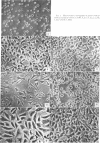Abstract
Double hybridization of Ehrlich ascites tumor cells (ETC) and L cells was performed. In the first step, a hybrid (LE) of ETC and LAG (a mutant of L cells, resistant to 10 μg/ml of 8-azaguanine) and a hybrid (LL) of LAG and LBrdU (a mutant of L cells, resistant to 100 μg/ml of 5-bromodeoxyuridine) were prepared by the use of artificial fusion by UV-irradiated HVJ (Sendai virus). In the second step the LE hybrid and ETC, or the LL hybrid and ETC, were fused again by UV-HVJ. The hybrids (LEE and LLE) were segregated during culture. Thus, the series of hybrids L, LLE, LE, LEE, and ETC was obtained. The morphological feature and karyological characters of these hybrids and the distribution of antigens corresponding to each parent on their cell surfaces supported the above identification of the series of hybrids obtained by double hybridization.
All three hybrids acquired new characters, such as the ability to form large colonies in soft agar and large tumors on the chorioallantoic membrane of chicken eggs, unlike either parent. The tumor-forming capacity of the series was ETC > LEE > LE > LLE; L cells formed no tumor in mouse abdomen under the test conditions.
Full text
PDF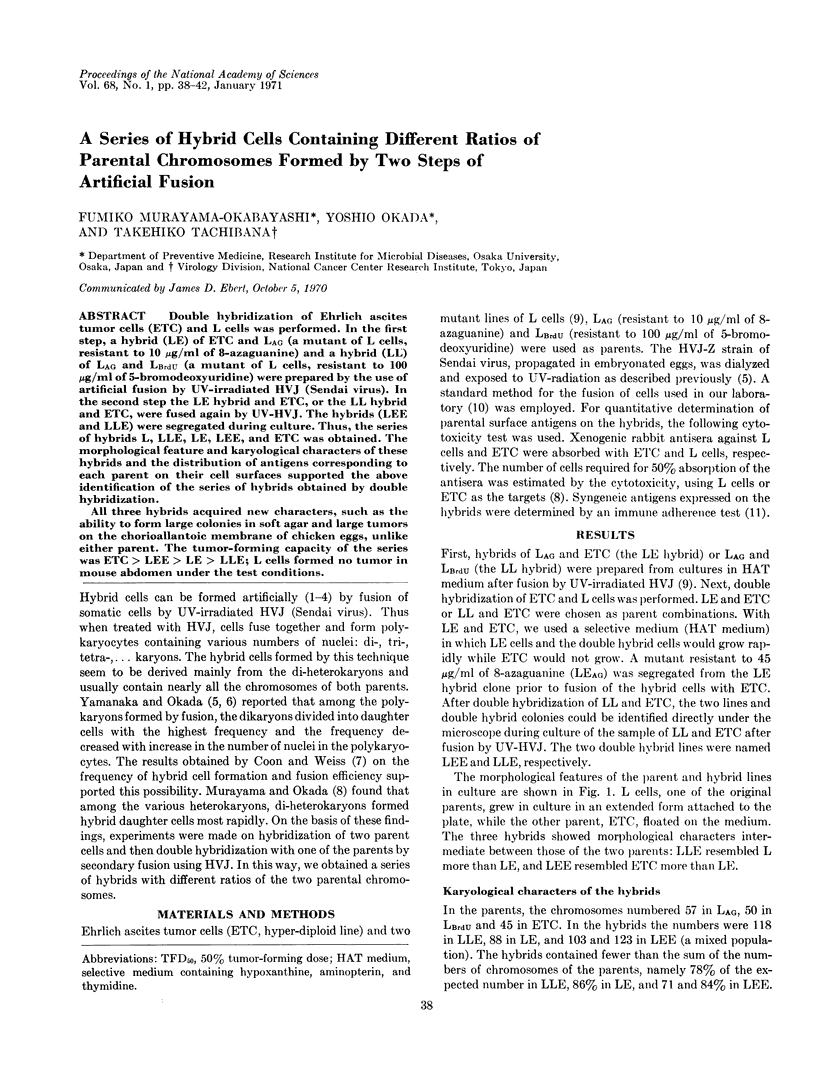
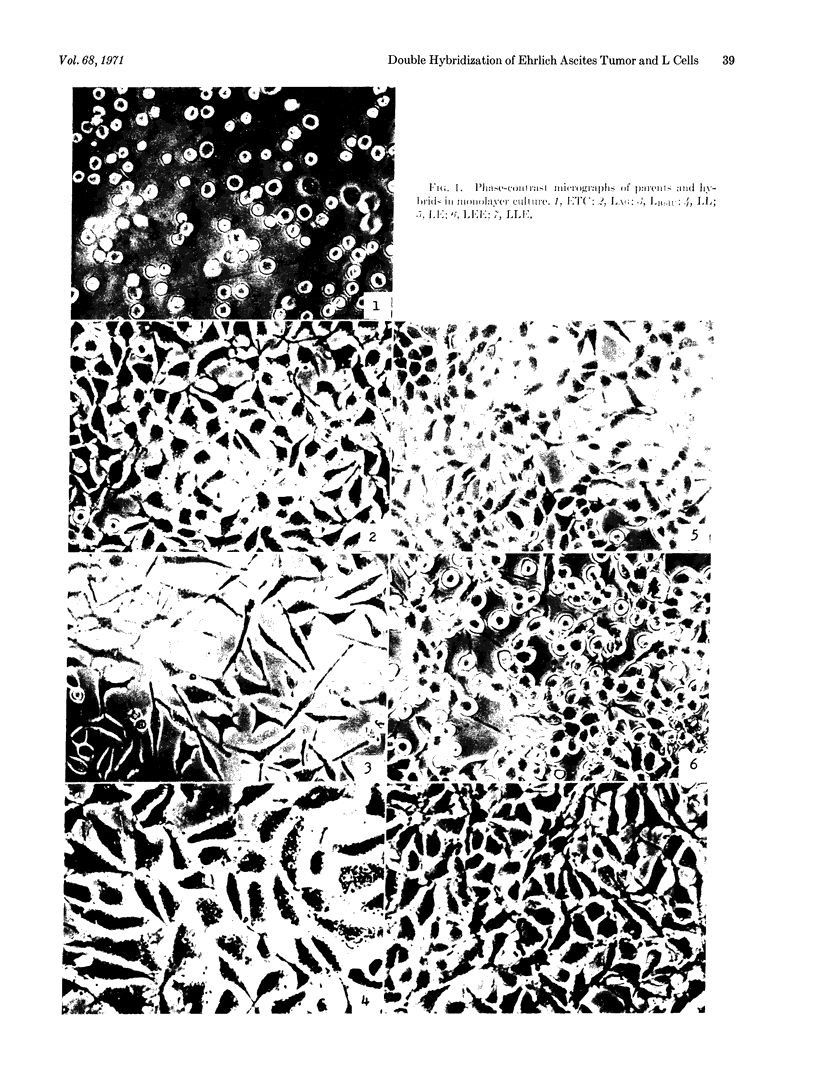
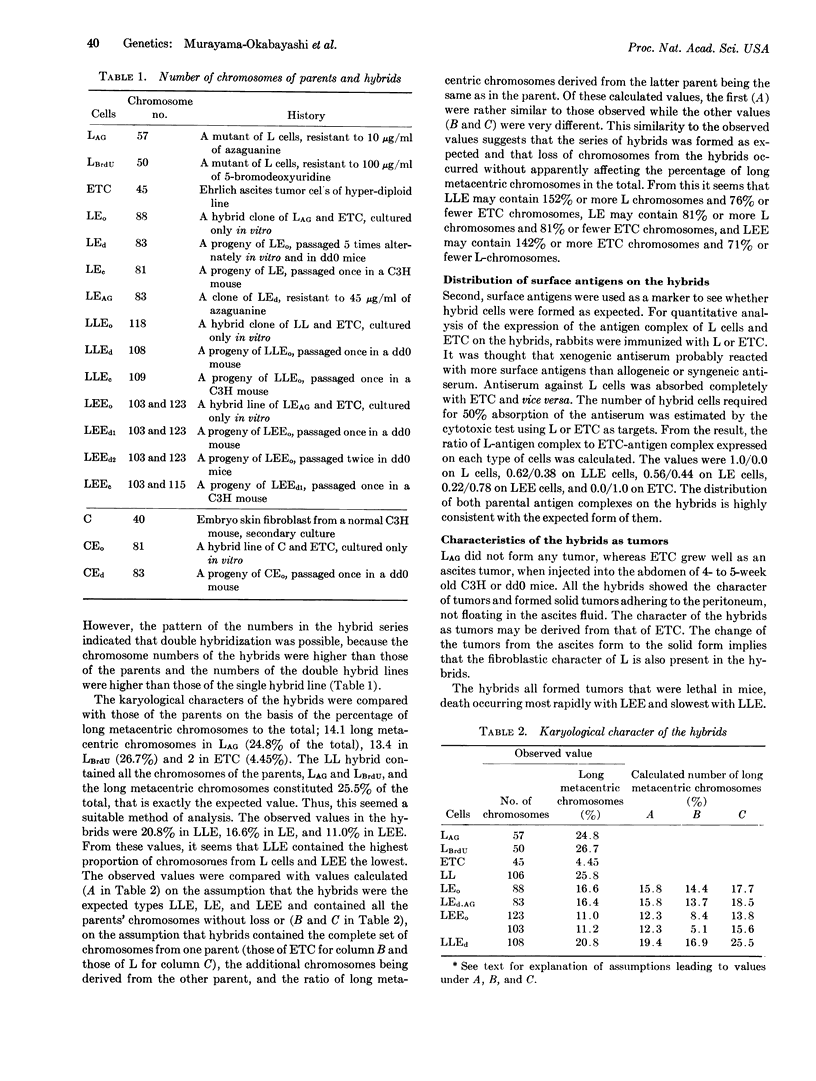
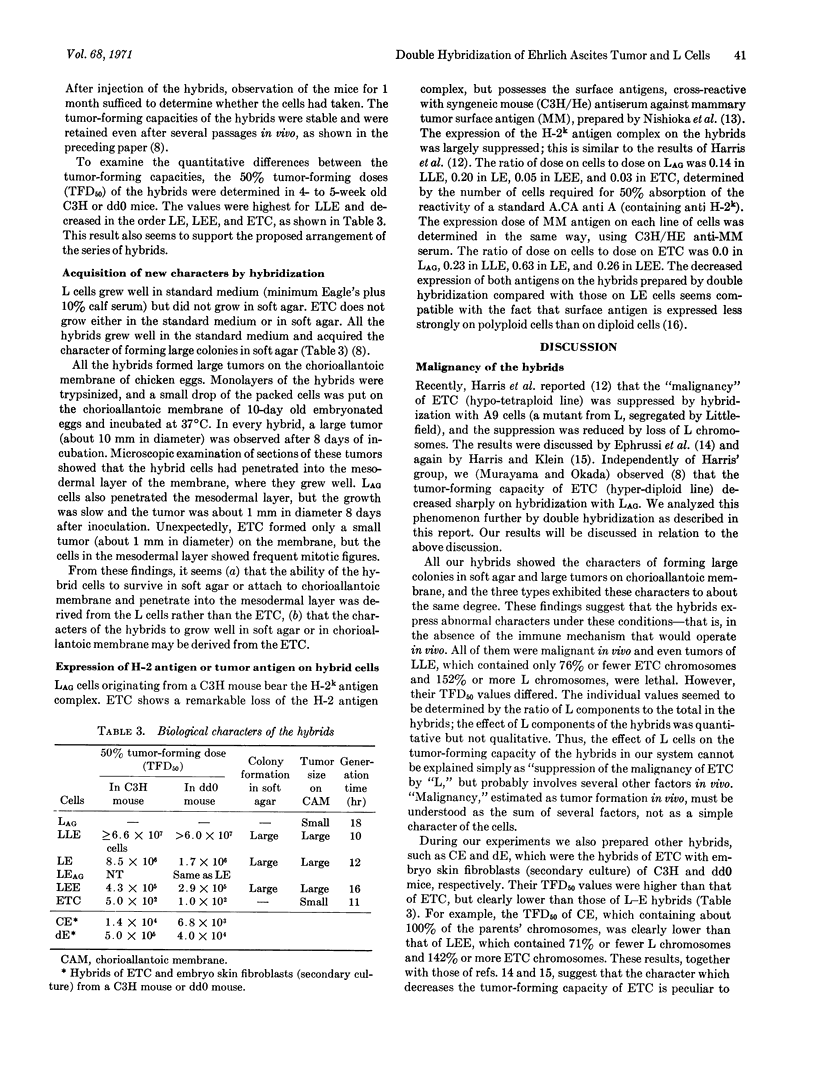
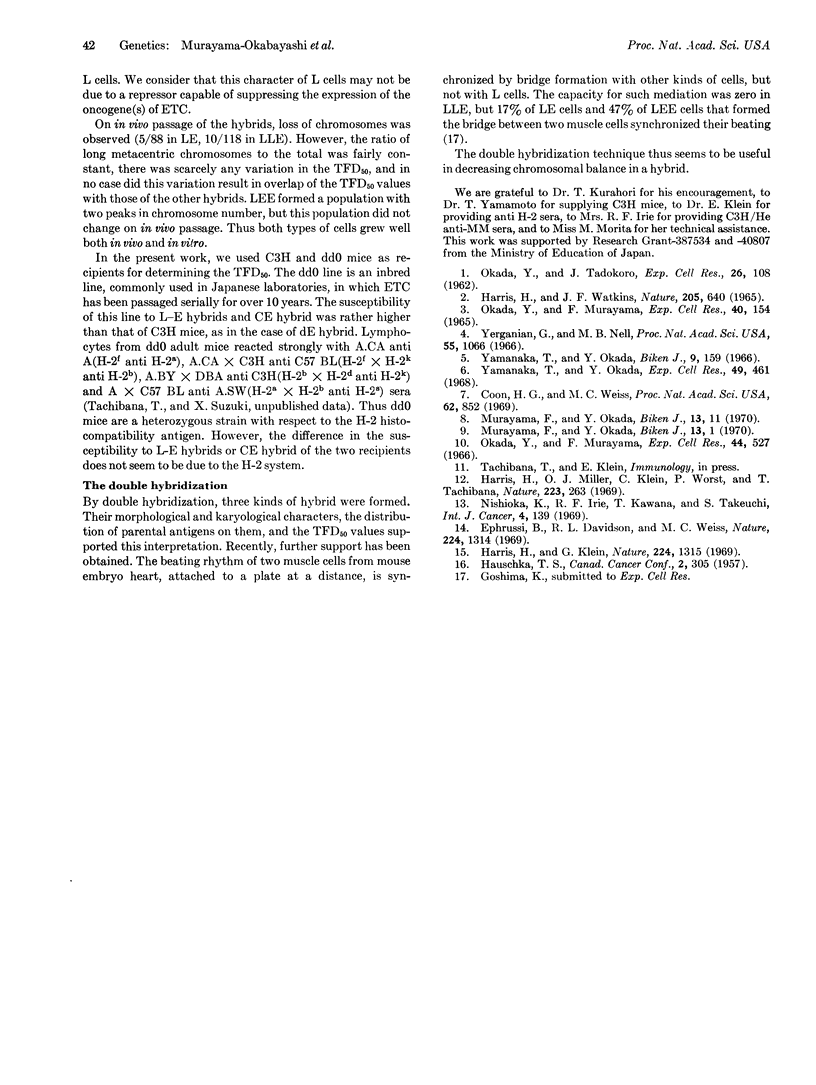
Images in this article
Selected References
These references are in PubMed. This may not be the complete list of references from this article.
- Coon H. G., Weiss M. C. A quantitative comparison of formation of spontaneous and virus-produced viable hybrids. Proc Natl Acad Sci U S A. 1969 Mar;62(3):852–859. doi: 10.1073/pnas.62.3.852. [DOI] [PMC free article] [PubMed] [Google Scholar]
- Ephrussi B., Davidson R. L., Weiss M. C., Harris H., Klein G. Malignancy of somatic cell hybrids. Nature. 1969 Dec 27;224(5226):1314–1316. doi: 10.1038/2241314a0. [DOI] [PubMed] [Google Scholar]
- HARRIS H., WATKINS J. F. HYBRID CELLS DERIVED FROM MOUSE AND MAN: ARTIFICIAL HETEROKARYONS OF MAMMALIAN CELLS FROM DIFFERENT SPECIES. Nature. 1965 Feb 13;205:640–646. doi: 10.1038/205640a0. [DOI] [PubMed] [Google Scholar]
- HAUSCHKA T. S. Tissue genetics of neoplastic cell populations. Proc Can Cancer Conf. 1957;2:305–345. [PubMed] [Google Scholar]
- Murayama F., Okada Y. Appearance, characteristics and malignancy of somatic hybrid cells between L and Ehrlich ascites tumor cells formed by artificial fusion with UV-HVJ. Biken J. 1970 Mar;13(1):11–23. [PubMed] [Google Scholar]
- Murayama F., Okada Y. Efficiency of hybrid cell formation from heterokaryons fused by HVI. Biken J. 1970 Mar;13(1):1–9. [PubMed] [Google Scholar]
- Nishioka K., Irie R. F., Kawana T., Takeuchi S. Immunological studies on mouse mammary tumors. 3. Surface antigens reacting with tumor-specific antibodies in immune adherence. Int J Cancer. 1969 Mar 15;4(2):139–149. doi: 10.1002/ijc.2910040204. [DOI] [PubMed] [Google Scholar]
- OKADA Y., TADOKORO J. Analysis of giant polynuclear cell formation caused by HVJ virus from Ehrlich's ascites tumor cells. II. Quantitative analysis of giant polynuclear cell formation. Exp Cell Res. 1962 Feb;26:108–118. doi: 10.1016/0014-4827(62)90206-9. [DOI] [PubMed] [Google Scholar]
- Okada Y., Murayama F. Multinucleated giant cell formation by fusion between cells of two different strains. Exp Cell Res. 1965 Oct;40(1):154–158. doi: 10.1016/0014-4827(65)90303-4. [DOI] [PubMed] [Google Scholar]
- Okada Y., Murayama F. Requirement of calcium ions for the cell fusion reaction of animal cells by HVJ. Exp Cell Res. 1966 Nov-Dec;44(2):527–551. doi: 10.1016/0014-4827(66)90458-7. [DOI] [PubMed] [Google Scholar]
- Yamanaka T., Okada Y. Cultivation of fused cells resulting from treatment of cells with HVJ. II. Division of binucleated cells resulting from fusion of two KB cells by HVJ. Exp Cell Res. 1968 Mar;49(3):461–469. doi: 10.1016/0014-4827(68)90195-x. [DOI] [PubMed] [Google Scholar]
- Yerganian G., Nell M. B. Hybridization of dwarf hamster cells by UV-inactivated Sendai virus. Proc Natl Acad Sci U S A. 1966 May;55(5):1066–1073. doi: 10.1073/pnas.55.5.1066. [DOI] [PMC free article] [PubMed] [Google Scholar]



